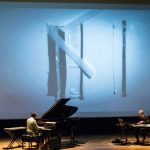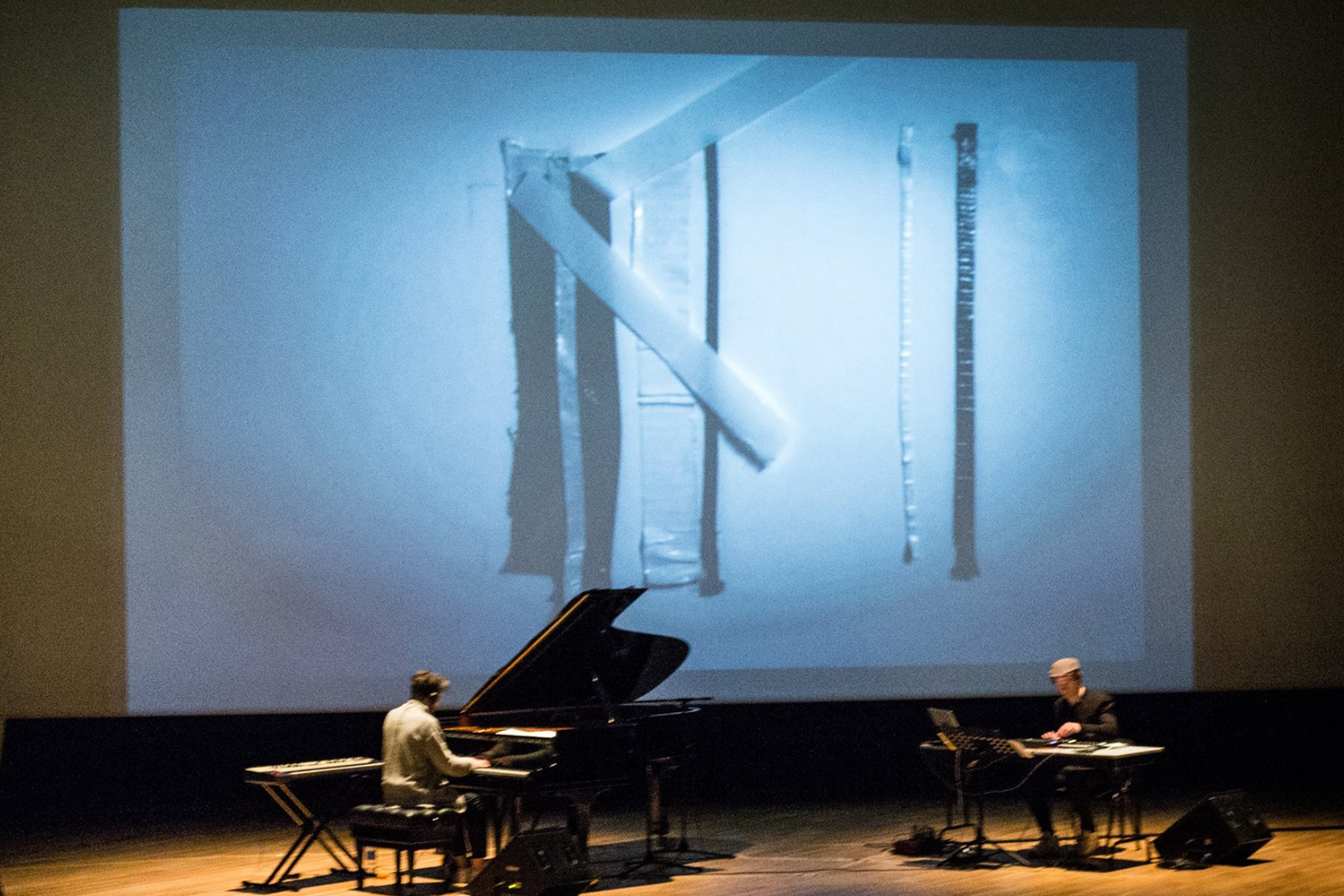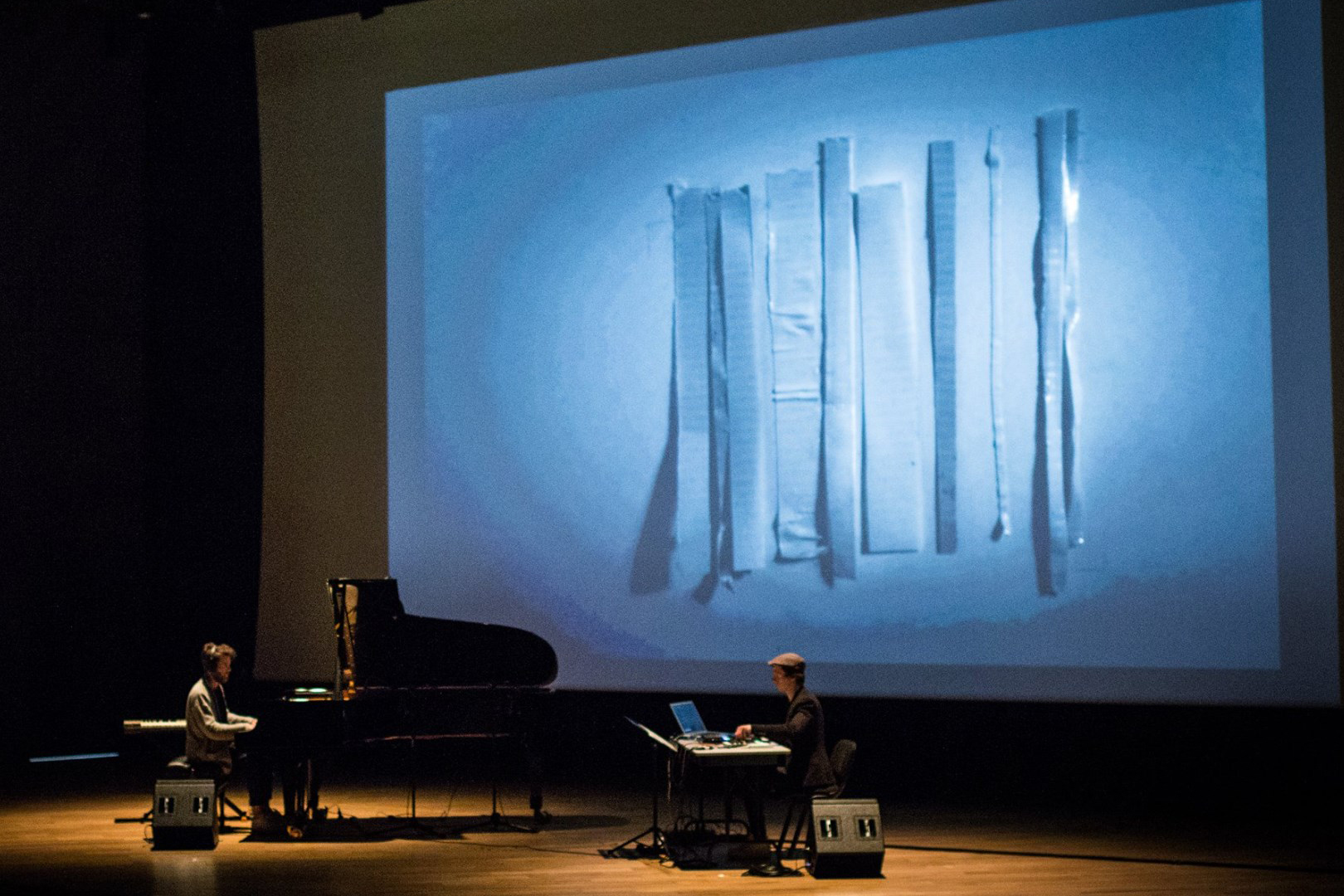“sjö : två” by Andrea Manzoni, Marcel Zaes
Title:
- sjö : två
Artist(s) and People Involved:
Composer, Director, Choreographer:
Collaborators:
Symposium:
- ISEA2016: 22nd International Symposium on Electronic Art
-
More artworks from ISEA2016:


Venue(s):
Creation Year:
- 2016
Medium:
- Multimedia concert, performance including live piano, electronics, and a visual installation
Duration:
- 60:00
Artist Statement:
What happens when a contemporary sound artist and a jazz pianist remain shut indoors in a baroque castle in the Piemontese mountains for two weeks? The result is Sjö a collaborative project between the Zurich-based electronic composer Marcel Zaes (CH) and the Paris-based jazz pianist Andrea Manzoni (ITA). From the sheltered rooms of their baroque retreat, Zaes and Manzoni present a sonic research project which is as contemporary as it is versatile. Sjö explores questions such as what it means for a piano to make a sound in the 21st century in a century over-determined by an electronic environment. Starting from Manzoni’s jazz-based technical expertise, the duo experiments with electronic transformations and the impact of their environment whether low-key piano bar or deep techno club, their sound seeks to adapt the piano to different 21st century musical settings. The visuals accompanying Sjö’s sonic investigations are provided by the artwork of the Munich-based artist duo Anna Schölß (GER) and Kristijan Kolak (GER).
Sjö : två is a one-hour concert program consisting of nine cocompositions by Manzoni and Zaes. All compositions include a tonal-melodic piano part and an electronic part which is based upon sonic research ideas. Several research settings that get used by Sjö are inspired by the creation of artificial spatiality which exceeds the possibility of the acoustic instrument. One of them is the use of convolution reverb in live performance. Several pedal hits, microphoned in the inside of the grand piano, act as impulse responses, while the live piano’s attacks trigger these responses. The struck piano string, resonating in the inside of the piano, microphoned, going through a convolution reverb where it resonates again in the virtual inside of the piano, creates supernaturality. Another setting consists of the use/abuse of stereophony. For the sake of theater-suitability we limit our work so far to stereophony and try to go to its very limits. Stereo as an assembly of two mono channels instead of an “authentic” image of space is the underlying concept. The use of a “wrong” mapping of the piano microphones, phase inversion, the mixing down of the left and right piano microphone into one mono channel while the same signal passes delayed in the other mono channel, or the application of a convolution reverb on both piano microphones but with a different impulse response for both channels; all of this, when assembled again and played-back as if it were an “ordinary stereo”, results in an artificial spatiality which could not exist in reality.
The creation of artificial temporality is the second concept used by Sjö, as the interest lies on the temporal perception of sound. The live piano playing of Manzoni necessitates a human-created temporality, which Zaes with his algorithms interferes. Detaching the X from the Y axis, the temporal envelope from the momentary timbre is the underlying concept, which Marcel Zaes often uses in all of his works, not only in Sjö. The momentary piano event – an attack, a decay, a release or a piano body noise – is freezed with diverse granular and freeze algo rithms. Thus, the piano event results in an extemporal static sound, which then is shaped by Zaes again in function of time. The detached spectrum is joined with an artificially created envelope. Both the shape of this envelope and the parameters/ quality of the underlying freeze are controlled by Zaes on stage. Further ideas of temporality include the real-time reversing of a single piano note—a concept that for the reason of its physicality remains impossible—yet can be approached, or the concept of introducing pure sine waves as natural overtones in an ongoing piano note, as the played note—once released—is prolonged and results again in a continuous sonic event that can be artificially shaped.
Andrea Manzoni: composition, production, live performance, piano, synthesizer
Marcel Zaes: composition, production, live performance, electronics, programming
Anna Schölß: artwork, visual installation and video
Kristijan Kolak: video
Website:
Video:
Category:
All Works by the Composer/Director/Choreographer(s) in This Archive:
- Andrea Manzoni
- More Art Events from Andrea Manzoni in this archive:

sjö : två
[ISEA2016]- Marcel Zaes
- More Art Events from Marcel Zaes in this archive:

sjö : två
[ISEA2016]








